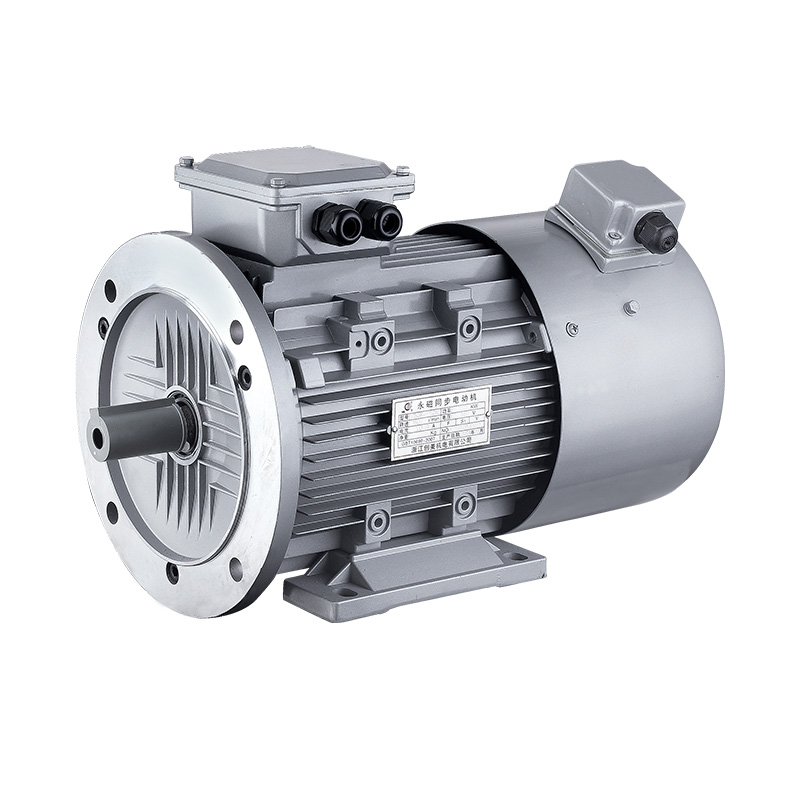Permanent Magnet Synchronous Motors (PMSM) are widely recognized for their precise control, high efficiency, and compact design. They are employed in a variety of sectors such as electric vehicles, industrial automation, HVAC systems, and robotics. With increasing interest in energy-saving technologies and intelligent motor control, PMSM have become central components in many modern applications

Permanent Magnet Synchronous Motors operate by utilizing permanent magnets embedded in or attached to the rotor, which interact with the stator's rotating magnetic field. These motors are classified into three main types based on the configuration of the rotor magnets and the application requirements: Surface-mounted PMSM, Interior PMSMs, and Inset PMSM.
Surface-mounted PMSM (SPMSM) feature permanent magnets fixed on the surface of the rotor. This design offers a simple construction and is suitable for applications requiring low to medium torque at high speeds. These motors exhibit minimal torque ripple and are commonly used in HVAC fans, servo drives, and appliances where precise speed control is essential.
Interior PMSM (IPMSM) have magnets embedded within the rotor core. This internal arrangement provides greater mechanical integrity and supports higher rotational speeds. The configuration allows for a phenomenon called saliency, which enhances the motor's torque generation through both magnetic and reluctance torque. IPMSM are frequently selected for electric vehicle propulsion and industrial automation where dynamic torque control and energy efficiency are prioritized.
Inset PMSM combine features of both surface-mounted and interior configurations. Magnets are placed slightly below the rotor surface, allowing for some reluctance torque while maintaining a relatively straightforward assembly. These motors offer a balanced solution in applications that require moderate torque with good dynamic response.
The price of a permanently excited synchronous motor, commonly referred to as a Permanent Magnet Synchronous Motor (PMSM), is influenced by a combination of technical, material, and production-related factors. Understanding these factors helps in making informed decisions when sourcing or designing motors for specific use cases.
1. Type and Grade of Permanent Magnets: One of the significant contributors to the cost of PMSM is the material used for the rotor magnets. High-performance rare-earth magnets, such as neodymium-iron-boron (NdFeB), offer strong magnetic properties and compactness but tend to be more expensive than alternatives like ferrite. The magnet grade, temperature stability, and coercivity all affect cost.
2. Power Rating and Size: Larger motors with higher power ratings require more materials, including copper windings, laminations, and housing. These motors also involve more complex thermal management systems. As the motor size increases, so does the cost of production and logistics.
3. Control Features and Sensor Integration: Many PMSM are paired with advanced control systems, including encoders or resolvers for position feedback. The inclusion of these components enhances motor performance but also adds to the overall system cost. Sensorless configurations may reduce component costs but may require more sophisticated drive algorithms.
4. Manufacturing Techniques and Tolerances: Motors that require tight tolerances, specialized machining, or custom rotor designs typically command higher prices due to precision tooling and extended production time. Additionally, high-speed motors may require dynamic balancing and advanced insulation systems, which can influence pricing.
5. Quantity and Customization: The scale of production affects unit pricing. Custom motor designs tailored to specific applications may require one-time engineering costs, prototyping, and testing, which can increase the final price compared to off-the-shelf solutions.
6. Application Requirements: Industry-specific standards, environmental certifications, or performance ratings (such as for aerospace or medical use) can necessitate special design considerations or quality control steps, influencing the cost structure.